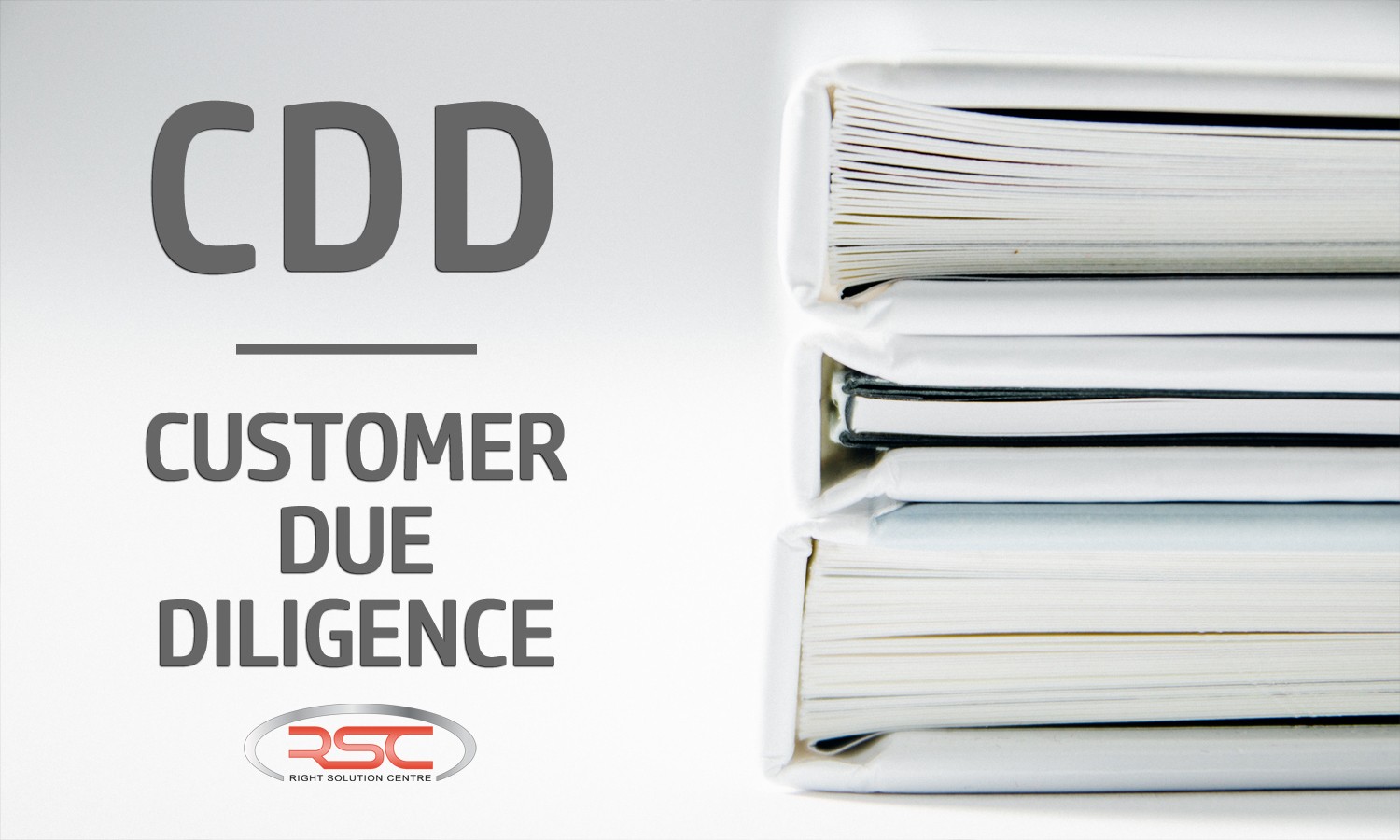Customer Due Diligence (CDD) – SIMPLY EXPLAINED
CDD is Customer Due Diligence. Translating this into human language it means, that a business needs to assess the risk of the clients and need to get their clients ID and proof of address to be sure that you are not involved in any money laundering, any financial scam or terrorism actions.
CDD is a process where information of a customer’s profile is collected and evaluated for potential risk. Upon completion of CDD, you assess the risk level of the client for your company. It can be marked as ‘low risk’ or ‘high risk’ or as a numeric value. The risk ratings help the company to decide how they need to work with that client, what information needs to be checked, what treatments and actions they must take.
CDD can alternatively be called KYC
KYC – Know your customer
CDD – Customer Due Diligence.
Both have the same meaning and the same purpose. In most countries, it is compulsory to have CDD in place for financial service, consulting, advocacy etc.
There are different levels of CDD to evaluate and check different customers. For example, a politically exposed company executive might require EDD, while CDD will be enough for an account holder with low transaction values.
CDD – Basic Customer Due Diligence. Most common verification.
EDD – Enhanced Due Diligence. Used mostly for politicians, requires careful examination.
SDD – Simplified Due Diligence. Used for low risk customers.
The organization needs to satisfy themselves (via CDD) that they are dealing with clients who are not criminals or facilitating money laundering etc. The CDD ties in with the principle of KYC (Know Your Client).
Basically, when you take on a new client you need to apply the Know Your Customer (KYC) principle – part of this process is obtaining Customer Due Diligence (verification of identity via accepted state identity documents such as passport, driving licence, etc as well as a recent utility bill dated within the last 6 months – but ideally within the last 3 months). Once you have obtained the required CDD and taken-on the client (i.e. established an ongoing business relationship) then you should generally only need to up-date or refresh the CDD every two years (depending on the risk level of the customer).
What information and documents are needed?
Customer Identification Document (ID) and Proof of Address (PoA): Companies must identify their customers by obtaining personal information, including name, photographic ID and address from a reliable, independent source.
Beneficial Ownership: Due diligence measures should identify beneficial ownership of a company. Identifying beneficial ownership should include understanding the control structure of the company.
Business Relationship: Following customer and beneficial ownership identification, companies must also obtain information on the nature of the business relationship they are entering into, and its purpose.
How to Perform CDD?
CDD is an important part of managing the risk that your company might have.
- Check and analyse the identity and business activities of your potential customer before entering a business relationship with them to screen the potential risk;
- Evaluate the risk level;
- Categorize your customers’ risk type before storing this information so it is in a digitally secure place and can be more easily accessed for potential future regulatory checks;
- Determine whether Enhanced Due Diligence (EDD) is needed or not.
Record Keeping
Performing a proper customer due diligence process is ensuring that all the records are retained in accordance with the company’s policy and GDPR regulations. The exact length of time to keep such records are usually mandated by law and differs between countries.
Keeping records helps the company to understand the entire relationship with the customer. In addition, proper record keeping system helps the company to meet its reporting obligations to their local financial intelligence unit or regulators.
Documents accepted for CDD:
Proof of Address:
The proof of address must be within the last 3 months from submission date and must include your full name, address and issue date.
A current utility bill (such as a gas, electricity or telephone or mobile phone bill)
A bank statement (from any financial institution)
A document issued by a government department that shows your address
A copy of your Tax Credit Certificate (TCC)
A Statement of Liability from Tax office
A Social insurance document (that shows your address)
ID
Acceptable forms of IDs are the followings:
Passport
Driver’s Licence card (local country)
National Identification Document
Requirements might vary depending on the country. Contact us for more information.

